
ssd-2 Lecture+2
.pdf
Type of RAM |
Capacity |
Price |
SDRAM |
@@ |
$ |
DDR SDRAM |
@@@ |
$ |
RDRAM |
@@@ |
$$ |
SRAM |
@ |
$$$ |
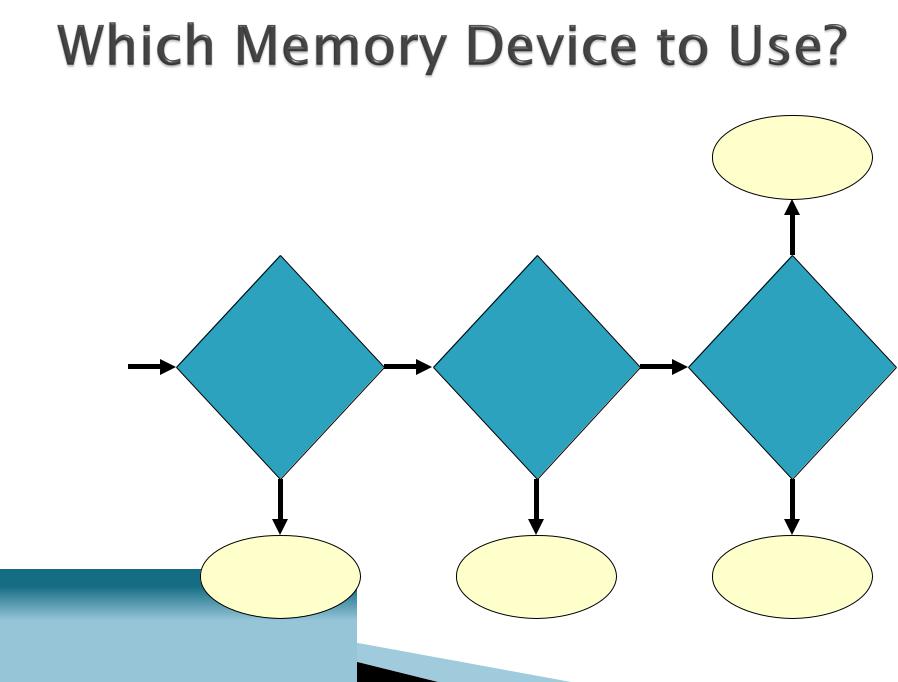
|
|
|
|
|
ROM |
|
|
|
|
|
no |
|
Need to |
|
Need to |
|
|
|
|
store |
|
Need to |
|
|
maintain |
yes |
no |
||
|
configura- |
update |
|||
Start |
data when |
|
|
||
|
tion |
|
information |
||
|
power is |
|
|
||
|
|
information |
|
? |
|
|
off? |
|
|
||
|
|
? |
|
|
|
|
|
|
|
|
|
|
no |
|
yes |
|
yes |
|
|
|
|
|
EEPROM |
|
RAM |
|
CMOS |
|
/ |
Flash
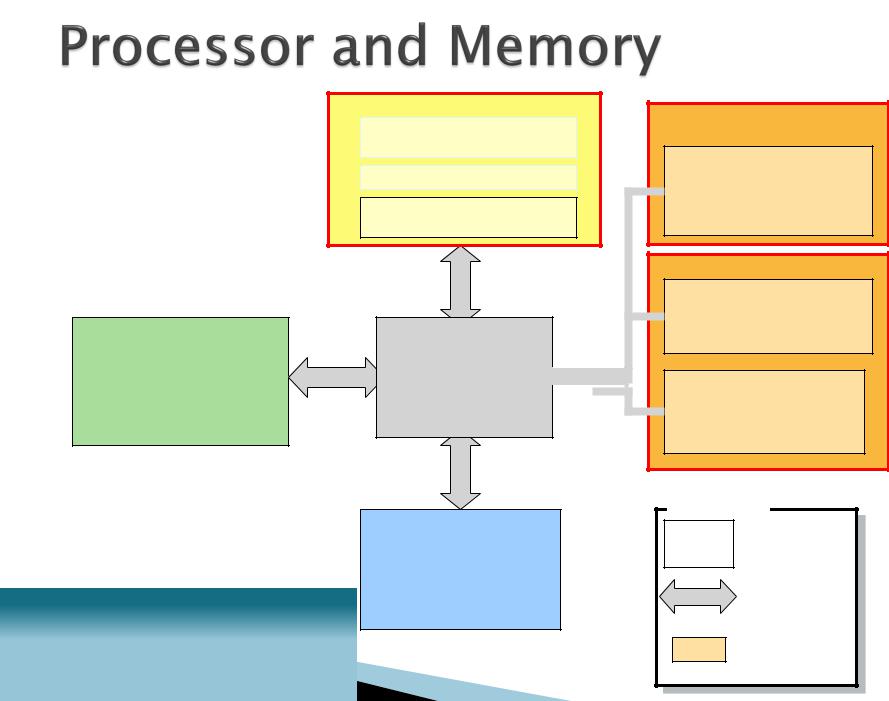
Storage Devices
(permanently store data and application programs)
Microprocessor
CPU
(ALU, Registers, Control unit)
L1 cache
L2 cache
(usually on CPU)
Chipset
(controls data flow)
Peripherals
(input/output)
Main Memory
RAM
(instructions to be executed when the computer is running)
Boot Memory
ROM
(instructions needed to boot the computer)
CMOS
(Configuration information used during the boot process)
Legend |
Components |
Data Path |
Memory |
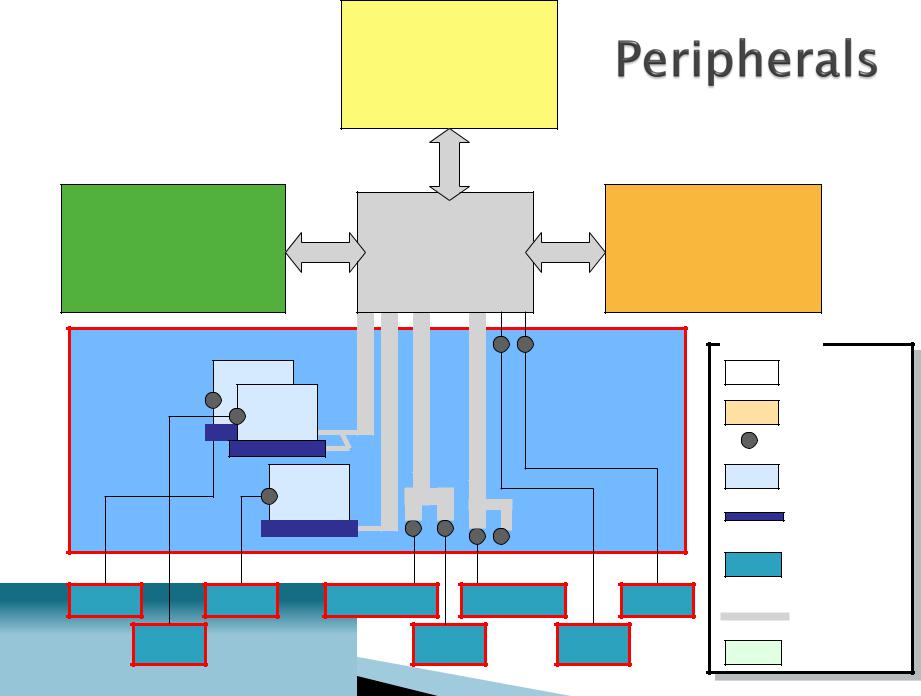
Storage Devices |
Microprocessor |
(executes instructions)
|
|
|
|
Main Memory |
Storage Devices |
|
|
(temporarily stores data |
|
(permanently store data |
Chipset |
and program instructions |
||
and application programs) |
|
|
while the computer |
|
|
|
|
|
is running) |
|
|
|
|
Legend |
Peripherals |
modem |
|
Parallel |
Component |
|
PS-2 |
|||
|
|
|
|
|
|
sound |
|
|
Memory |
|
card |
|
|
Port |
|
PCI Slots |
|
|
|
|
|
|
Expansion |
|
|
|
|
|
|
|
video |
|
|
Card |
|
card |
USB |
FireWire |
Expansion |
|
AGP Slot |
|||
|
|
Slot |
||
|
|
|
||
|
|
|
|
|
|
|
|
|
|
Peripheral |
|
|
|
|
|
Device |
Modem |
Monitor |
Digital camera |
Camcorder |
|
Printer |
|
|
|
|
|
Bus |
|
Speaker |
Scanner |
Mouse |
Disk drive |
|
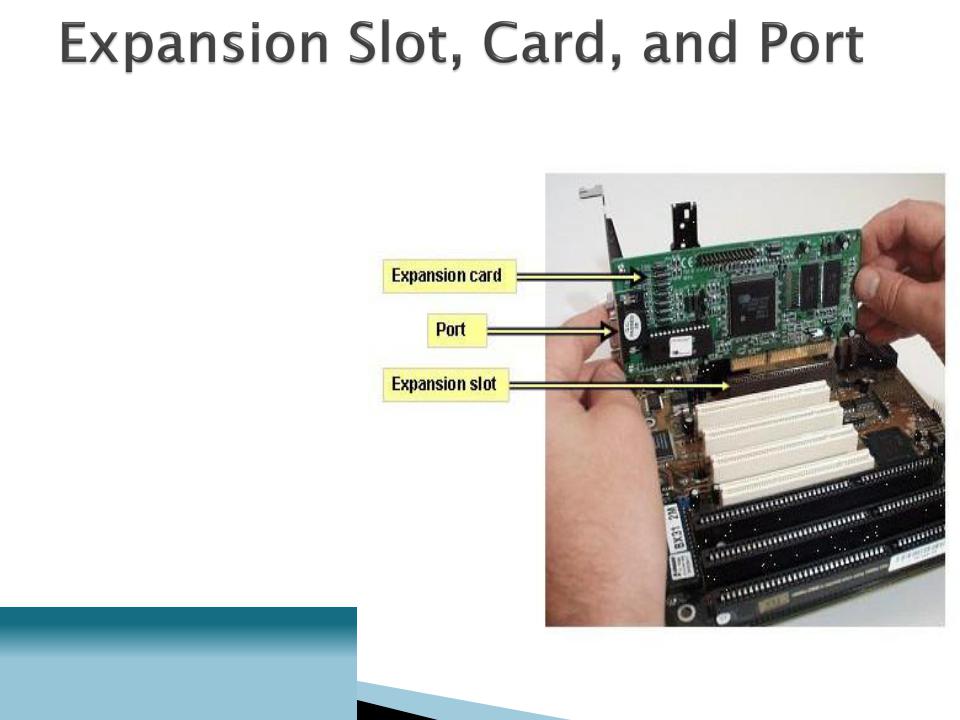
An expansion slot is a slit-like socket on the motherboard into which a circuit board can be inserted.
The circuit board is called the expansion card.
◦Used to extend the computer’s capability
◦Examples: sound card, video card
◦Also provides port(s), which are connector(s) between the expansion card and the peripheral device.

The two most common types of expansion slots are Peripheral Component Interconnect (PCI) and Accelerated Graphics Port (AGP).
PCI (Peripheral Component Interconnect ) slot
◦Can hold a variety of expansion cards such as a sound card or an Ethernet card
AGP (Accelerated Graphics Port) slot
◦Primarily used for graphics cards
PCMCIA (personal computer memory card international association) slot
◦Used for laptops in place of PCI slots
◦Relatively smaller than a PCI slot

Small circuit boards that control the peripheral devices
◦Graphics Cards
Takes signals from the processor and displays the graphics, images in the monitor
◦Sound Cards
Converts analog sound signals to digital and vice versa
◦Modem
Transmits data over phone or cable lines

◦Ethernet card
Serves as the interface to a Local Area Network (LAN)
Transfers data at a rate of 10 Mb/s
Newer versions of Ethernet called "Fast Ethernet" and "Gigabit Ethernet" support data rates of 100 Mb/s and 1 Gb/s (1000 Mb/s).
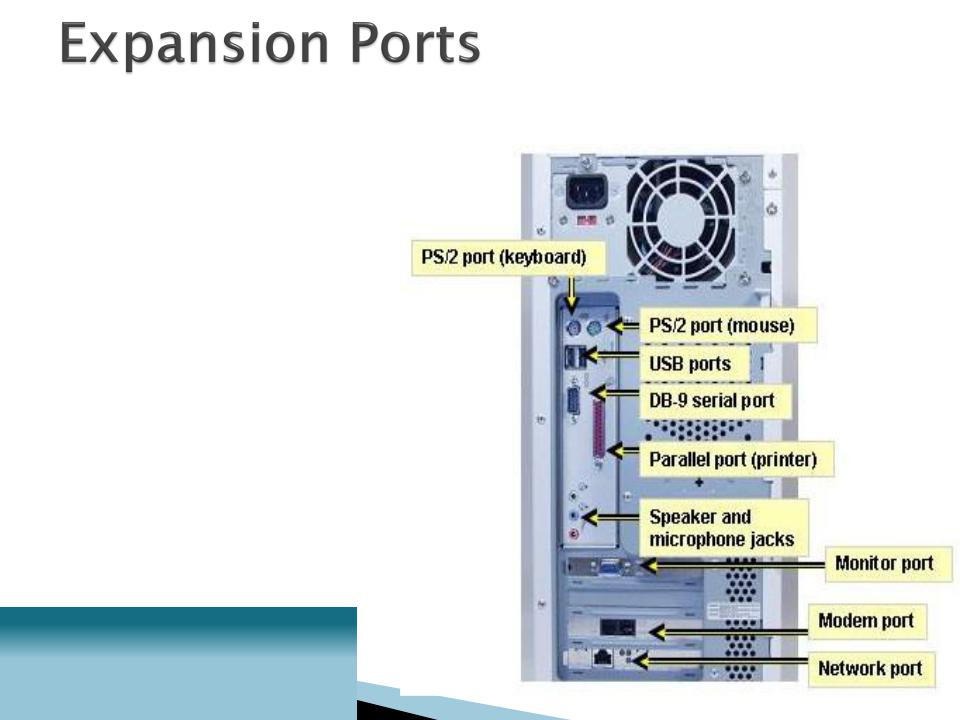
Ports are connectors that enable signals to be passed in and out of a computer or peripheral device.
Cables from peripheral devices connect to ports of a computer system.
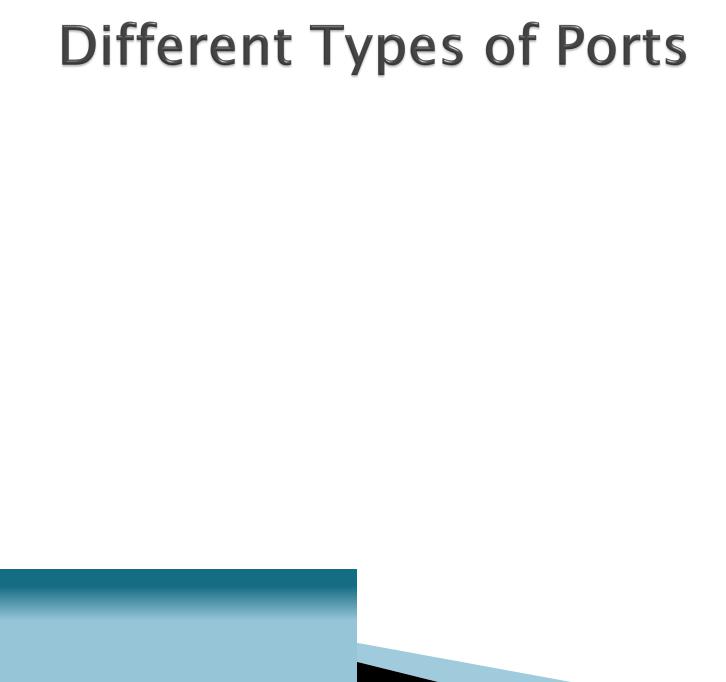
PS/2 port, also known as serial port
◦Transfers data one bit at a time
◦Uses a 6-pin, mini-DIN configuration, which look like a small, round port
◦Used to be the de facto standard for keyboard and mouse connections, however, they are gradually being replaced by USB ports.
